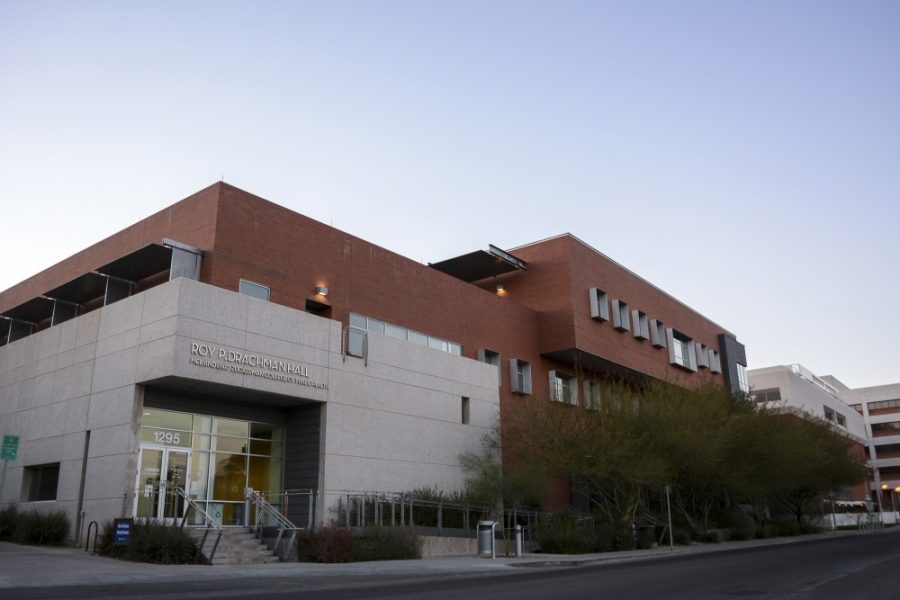The Mel & Enid Zuckerman College of Public Health put on its 2016 Spring Internship Conference on Friday. UA public health graduate students presented their capstone internship projects from 1-5 p.m. in the Roy P. Drachman Hall.
Brittany Nigon, a public health graduate student who completed an internship with the Arizona Department of Health Services, presented on students’ reactions in bars to sexual aggression. Her presentation was titled, “Undergraduate Women’s Expectations of Sexual Aggression Victimization and Subsequent Help-Seeking Behavior in Bars.”
“[I] was interested in learning more about sexual violence prevention, but hadn’t had the opportunity to do so previously,” Nigon said in an email.
She said she has worked in sexual health for a while and has “had the privilege of working as a teaching assistant for the public health undergraduate human sexuality class for Dr. [Mary] Koss,” a regents’ professor in the College of Public Health who encouraged her to learn more about sexual violence prevention.
The project involved working with ADHS’s bar bystander training program, the Arizona Safer Bars Alliance. ASBA is a “project that uses a multi-session curriculum to train alcohol serving staff on bystander interventions … to reduce sexual aggression in their establishments,” according to its website.
This program focuses on training bar staff to recognize what sexual assault is, in order to offer help and interference if necessary.
In her presentation, Nigon said one of the objectives of this project was to determine how students reacted to this program through surveys and focus groups. Another objective, included in her abstract, was learning the best practices for implementing bystander intervention programs in bars near college campuses. The project was advertised through fliers around campus, and the sample size was limited to undergraduate females at the UA.
“If students don’t know bartenders have been trained, they’re not going to ask for help,” Nigon said in her presentation.
A part of Nigon’s survey polled students about the most helpful methods to notify patrons of the ASBA training. One idea to inform people about training is having signs either outside or in the bathroom.
Results from the surveys and focus groups showed that “study participants identified high expectations that sexual aggression would occur” in bars near their campus and participants are also “primarily attracted to bars with characteristics that facilitate sexual aggression,” as stated in Nigon’s abstract.
Those characteristics are aspects of bars such as dance floors, loud music and darker lighting. Despite this acknowledgment, many participants stated they would not go to the bar staff for help. In one particular survey of 100 female undergraduates, only 30 said they would ask the bar staff for help in a situation where they experienced sexual aggression.
Nigon stated in her presentation that some of the reasons the focus groups gave for their reluctance were fear of escalating the situation and some were unsure if the behavior qualified as sexual aggression.
Nigon said she “would love to continue working with ASBA,” but has accepted a fellowship in Wisconsin beginning soon. She stated, however, that she will be sharing her results with ADHS and ASBA.
Nigon believes this study has further implications and can be used in the future to inform sexual violence prevention programs.
Follow Hannah Dinell on Twitter.









